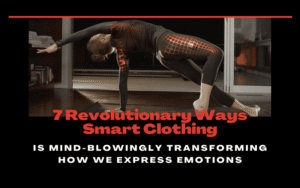Your workplace dress code choices communicate your career ambitions louder than words ever could. In today’s competitive professional landscape, 93% of hiring managers admit that appearance influences their perception of an employee’s potential for advancement, while studies reveal that well-dressed employees earn an average of 20% more than their casually dressed counterparts.
The language of professional attire extends far beyond following company policies—it’s a strategic communication tool that signals everything from your leadership aspirations to your industry understanding. Whether you’re navigating corporate hierarchies or startup environments, your sartorial choices create an immediate narrative about your professional trajectory.
The Silent Language of Success
Every fabric choice, fit decision, and styling detail broadcasts messages about your career intentions. Research from Northwestern University demonstrates that clothing affects not only how others perceive us but actually changes our cognitive performance—a phenomenon called “enclothed cognition.”
When you understand how workplace dress code interpretation works, you gain control over your professional narrative. Your outfit becomes your opening statement in every meeting, interview, and networking opportunity.

The C-Suite Signature: Executive Presence
Top-level executives rarely follow trends—they set standards. Their workplace dress code philosophy centers on timeless sophistication that transcends seasonal fashion. Notice how CEOs favor impeccably tailored suits in navy, charcoal, or black, paired with minimal but high-quality accessories.
This style approach signals stability, reliability, and long-term thinking. When you dress like leadership, you’re subconsciously communicating that you belong in leadership circles.
Middle Management: The Balancing Act
Mid-level professionals face unique workplace dress code challenges. They must appear authoritative to their teams while remaining approachable to upper management. This translates to polished business professional attire with strategic personal touches—perhaps a distinctive watch, quality leather goods, or subtle pattern mixing.
Rising Stars: Strategic Style Investment
Ambitious early-career professionals use workplace dress code as advancement strategy. They often dress slightly above their current role, signaling upward aspirations. This means investing in fewer, higher-quality pieces rather than fast fashion quantity.

Financial Services: Conservative Power
The workplace dress code in banking and finance remains deliberately traditional. Dark suits, crisp shirts, and conservative ties communicate trustworthiness with money—a non-negotiable in this industry. Even on casual Fridays, the expectation leans toward elevated business casual rather than true casualwear.
Career-minded professionals in finance understand that their workplace dress code must project stability above personality. Bold fashion choices can undermine client confidence in your financial judgment.
Technology: Elevated Authenticity
Tech industry workplace dress code has evolved beyond the hoodie stereotype. Today’s successful tech professionals blend comfort with intentionality—think premium casual wear, thoughtfully chosen sneakers, and high-quality basics.
The key is looking purposeful rather than accidentally dressed. Your workplace dress code should suggest you’re focused on innovation rather than conformity, but you still respect professional standards.
Legal Profession: Traditional Authority
Law firm workplace dress code remains among the most conservative. Partners expect junior attorneys to understand that courtroom credibility often hinges on traditional professional appearance. Dark suits, conservative shoes, and minimal accessories aren’t just preferred—they’re essential for career advancement.
Your workplace dress code in law communicates respect for institutional authority and attention to detail—qualities directly correlated with legal competence.
Creative Industries: Artful Professionalism
Creative field workplace dress code allows more personal expression while maintaining professional credibility. The challenge lies in balancing artistic flair with business acumen. Successful creative professionals often incorporate unique elements—interesting textures, artistic jewelry, or thoughtful color combinations—while keeping the overall silhouette professional.
The Remote Work Revolution: Redefining Professional Standards
The shift to hybrid work has transformed workplace dress code expectations. Video-first meetings require strategic dressing from the waist up, with particular attention to colors and patterns that read well on camera.
Successful remote workers maintain professional standards even in home offices, understanding that their workplace dress code discipline affects their own productivity and how colleagues perceive their commitment.
Investment Dressing: Strategic Wardrobe Building
Understanding workplace dress code as career investment changes how you approach clothing purchases. Instead of filling closets with trendy pieces, ambitious professionals build capsule wardrobes around versatile, high-quality basics.
The most successful approach involves investing 70% of your clothing budget in timeless professional pieces and 30% in trendy accessories that keep your look current without requiring complete wardrobe overhauls.
Seasonal Workplace Style Navigation
Your workplace dress code adaptation to seasons demonstrates professional sophistication. Spring calls for lighter fabrics in professional silhouettes, summer requires strategic layering for air-conditioned offices, fall allows richer textures and deeper tones, while winter demands elegant outerwear that maintains your professional image.
The Psychology of Fit and Tailoring
Perhaps no aspect of workplace dress code matters more than proper fit. Ill-fitting clothing, regardless of quality or brand, undermines professional credibility. Well-tailored pieces in affordable fabrics consistently outperform expensive clothes with poor fit.
Career-focused professionals prioritize alterations as essential workplace dress code investment. The difference between good and great professional appearance often lies in those final tailoring adjustments.

Professional Women: Power and Approachability
Women face unique workplace dress code challenges, balancing authority with approachability. Research shows that women in leadership positions often choose structured silhouettes that convey competence while avoiding overly trendy pieces that might undermine credibility.
Professional Men: Beyond the Basic Suit
Men’s workplace dress code evolution has introduced more variety while maintaining traditional foundations. Successful male professionals understand that fit matters more than fashion, and they invest in quality basics rather than trend-driven pieces.
Common Style Mistakes That Sabotage Career Growth
The most damaging workplace dress code errors aren’t obvious violations—they’re subtle misreadings of professional context. Overdressing for company culture can isolate you from teams, while underdressing signals lack of ambition or awareness.
Poor grooming undermines even the most expensive clothing, while inappropriate seasonal choices suggest poor judgment. The most successful professionals develop intuitive understanding of their workplace dress code expectations and adapt accordingly.
Building Your Professional Brand Through Style
Your workplace dress code should reinforce your personal brand rather than mask it. This means identifying signature elements that become associated with your professional identity while staying within industry expectations.
Some professionals become known for distinctive eyewear, others for exceptional tailoring, and still others for thoughtful accessory choices. The key is consistency that builds recognition without becoming costume.
Future-Proofing Your Professional Wardrobe
As workplace dress code continues evolving, successful professionals focus on adaptable pieces that work across different professional contexts. This means choosing versatile items that translate from video calls to in-person meetings, from creative presentations to conservative client meetings.
The most career-savvy approach involves building a flexible professional wardrobe that can adapt to changing workplace dress code expectations while maintaining your personal brand integrity.
Your Style Success Strategy
Understanding workplace dress code as career communication tool transforms daily dressing from routine task to strategic opportunity. Every outfit choice becomes chance to reinforce your professional narrative and advance your career ambitions.
Start by analyzing your industry’s unwritten workplace dress code rules, then gradually build a wardrobe that positions you for your next career level rather than your current one. Remember: you’re not just following workplace dress code—you’re using it to write your success story.
Ready to decode your workplace dress code for career advancement? Begin by observing the style choices of people in roles you aspire to reach—their clothing choices reveal the unspoken rules of professional success.




